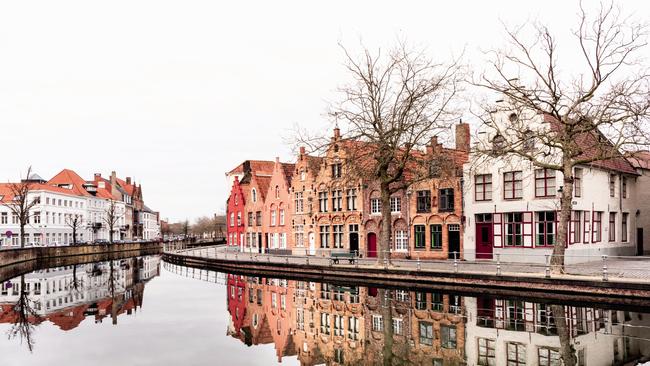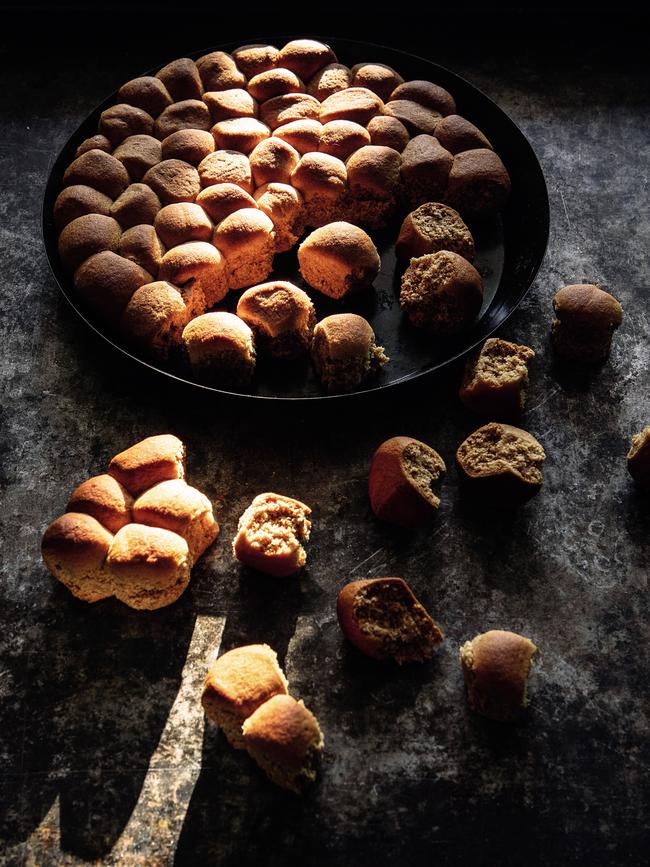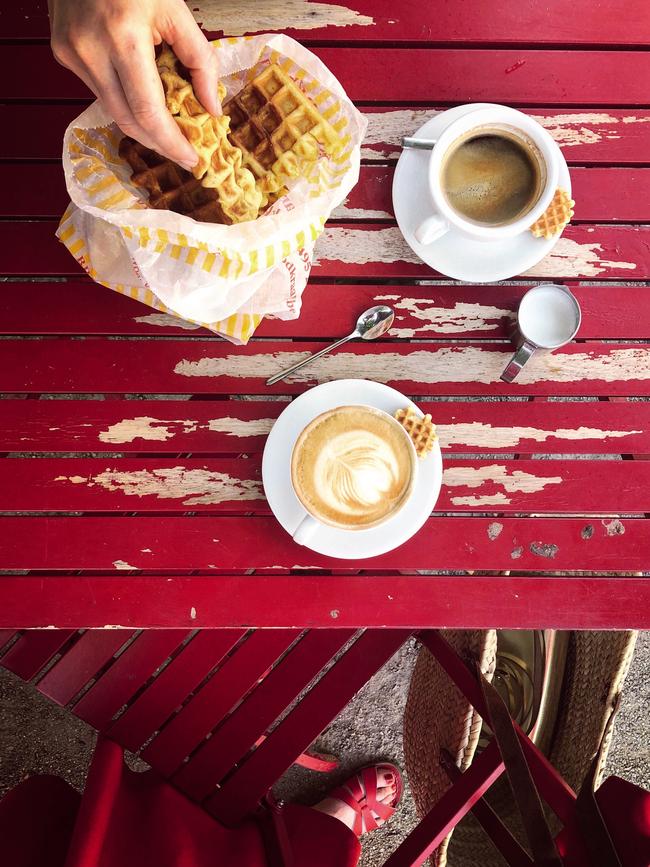Cities ‘scented like biscuits’: why you should have Belgium on your European itinerary
It was as if a marketing strategist had carefully positioned Antwerp’s biscuit and chocolate factories to greet its visitors.

My mother says that when I recall memories of my childhood they are always connected to food. I was three when I first tasted strawberries in Switzerland. I tasted them, then looked out of the window, and my dad was there, backlit; behind him a water view and a large boat that was passing on the horizon. The flavour memory encapsulated the memory of the view.
I was four when I absorbed the scent of paprika in a Hungarian village, where it was hung drying in strands on every white-painted house. That same scent I recognised in the goulash in the Czech Republic when I was five. That very year I had freshly fried, thick-cut potato chips, heavily salted, in a pointy paper bag from a food cart by the Donau river in Budapest. My first encounter with chips. My first nectarine came out of a brown paper bag after a long walk on a summer day. I remember smelling the warm skin of the fruit, investigating the texture, and I can recall the bitterness of the magenta-red stone as I was trying to get the last of the flesh from it.
You may also like:
Why you should stay in Paris’ 2nd arrondissement
From seats of power to tourism powerhouses
Oslo’s astonishing Art Deco Sommerro Hotel
Germany to me means an overload of thick cream and cherries in a choux pastry – a Windbeutel – in a tearoom where we took refuge after a snowstorm and what seemed like hours of walking across a frozen lake.
Christmas is the spiced scent and flavour of Lebkuchen, a tiny sip of gluhwein, cinnamon, greasy reibekuchen and a red candy apple at the annual Christmas fair in Aachen or Cologne. And then there was England with its welcoming traditional food, the first time I had sweet baked tiny tomatoes on the vine, my first taste of fragrant Indian-inspired pub food, the wonders of a pappadum and the joys of handheld Cornish pasties after a swim in the Cornish sea.
Reliving a memory of flavour and scents feels deeply emotional, a bit like time travel, like your whole body can understand and recognise the memory of this flavour. There is also a soothing feeling that comes with flavours that stay the same, flavours you thought were lost but are found again. A bakery that doesn’t change its recipe gives you a piece of your childhood back with every sniff of the paper bag that holds the same sliced raisin loaf you had as a child, a teenager, a student and now a grown woman wondering where time has gone.
I moved back to Antwerp and now I line up again in front of that same bakery I left behind, along with the city, 16 years ago.

We often take these scents and flavours for granted, and they are usually missed when they are gone. I didn’t travel back to Hungary or the Czech Republic for more than 20 years, I moved away from the town with the bakery that bakes the best raisin bread. But recently when I visited Hungary I found the scent again in a jar of freshly ground paprika. It brought back those sandy roads and the hay cart that drove in front of us. The relentless heat of 1989, the apple my mother cut for me in the car with my grandmother’s knife to provide refreshment.
When I was growing up in Antwerp, there were distinctive scents in the air that defined the smell of the city for me. The first and most dominant was the scent of caramelising sugar and a whiff of cinnamon from the waffle irons that turned out Liège waffles all day, every day. When exiting our majestic central station, onto the “Champs Élysées” of Antwerp, you would be greeted with this sweet scent, and by the time it had worn off and you reached the large Meir shopping street, the smell of the next waffle baker would greet you. The Meir is about 550m long and used to house three or four waffle bakers. Their little shabby makeshift shops squeezed into small spaces that could just fit one human, a waffle iron and a fridge to keep the waffle dough. These waffle shops were not at all nostalgic or authentic, but they were there for my formative years.
Every week in winter, autumn and on chillier spring days I would go to town with my mother and we would buy ourselves a freshly baked Liège waffle: thick, yeasty, crisp on the outside, dotted with caramelised sugar nuggets, bits of bitter burnt caramel and still doughy on the inside. This waffle was lunch, it was substantial, it was not a quick snack, you had to have an appetite to finish a whole one.
Somewhere in the mid-1990s my favourite waffle shop opened on the corner of the street that led to the Wild Sea area in town. They had room for at least 20 irons, some for Liège waffles, but also for lacquemant, butter and Brussels waffles. Their dough was the best in the city, their caramelisation ratio perfect, and it was an utter joy to bite into their waffle. Sadly, today the scent of Liège waffles has disappeared from Antwerp.
My parents remember the scent of Antwerp differently. My hometown is and was called the koekestad, or “biscuit city”, because the city wasn’t only home to two large biscuit factories, but also because the first scent that hit your nostrils when you got out of the train in Antwerp was the smell of freshly baked biscuits.


Biscuit factory De Beukelaer, founded in 1885 because they were fascinated by the English biscuit phenomenon, was situated next to the Central Station. The smell was distinctive enough in the area for my mum and dad to remember it vividly. Biscuit factory Cordemans, later Parein, occupied a dominant part of Antwerp South. For someone travelling to Antwerp at the time, the biscuit factory with its tall chimneys must have seemed as imposing on the skyline as the cathedral. There used to be a beautiful Antwerp South station near the biscuit factory, so when people got off the train, they were welcomed by the scent of biscuit.
Another sweet smell in Antwerp was chocolate. The first chocolate factory in Belgium opened in 1845 on the Dam, next to the train station. It is as if a marketing strategist carefully thought about the location of these biscuit and chocolate factories so that visitors would be greeted with the smell as soon as they arrived. Antwerp always carried a sweet scent in the air. But as sugar refineries, biscuit factories and waffle trends left the city centre, koekestad became the definition of the town.
This is an edited extract from Dark Rye and Honey cake by Regula Ysewijn (Murdoch Books, $55)
Getting there: While Brussels is Belgium’s major hub, tourists are often more attracted to the historic cities of Antwerp and Bruges. Antwerp, 40km north of Brussels is serviced by direct trains that leave Brussels half hourly. Bruges is 100km northwest of Brussels and also accessible by train.
Eat: Waffles. The best concentration of waffle houses in Antwerp is in the historic centre and around the Antwerp Groenplaats station.
Stay: In Antwerp try Hotel Indigo, which is centrally located (hotelindigoantwerpcitycentre.com).





To join the conversation, please log in. Don't have an account? Register
Join the conversation, you are commenting as Logout